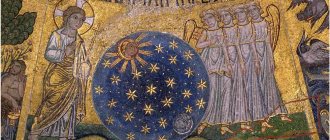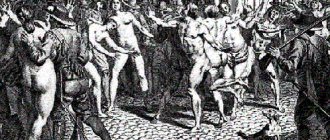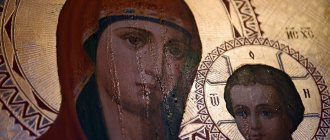The event called “the creation of the world” in religious literature is actually an astronomical event, timed to coincide with a specific date for a specific relative position of specific celestial bodies. Namely, on the date “5508 BC.” The center of the ecliptic, the position of the Earth’s rotation axis on the precessional trajectory, and the brightest star of the Northern Hemisphere, Arcturus, are lined up in one line.
This event became the starting point of the Old Russian calendar. As the ancient Rus spread to the countries of settlement of native peoples, the priests possessing astronomical knowledge were exterminated by the natives or mestizos (Semites), knowledge was mostly lost, and some of it from the astronomical sphere, due to misunderstanding, was transferred to the religious sphere and became the basis of the so-called "world" "religions".
Tyunyaev Andrey Aleksandrovich, academician of the Russian Academy of Natural Sciences,
source https://www.rusif.ru/vremya-istorii/gm-Russia/rus-vremya-do-ne/5508-Russia-Sotvorenie_mira.htm
The biggest mystery in chronology and the calendar is the date taken as the beginning of its countdown. It is called the same in all calendars - CREATION OF THE WORLD. This term is so difficult to interpret that today, despite the numerous studies in the field of mythology, calendar and history, there is no clear interpretation of it. The most ridiculous is the statement that supposedly Christian monks (or anyone else) added up the lifespans of all the Christian characters in the Bible and, on the basis of this, came to the figure “5508 BC,” which they allegedly called the “date creation of the world." Meaning, of course, the literal creation of the world according to the Christian interpretation.
Calendar reforms
The calendar is one of the oldest inventions of mankind. The easiest way is to find confirmation in sources for facts that happened not so long ago. For example, just some three hundred years ago. Not much time has passed. It has not yet been possible to fully destroy and rewrite sources to suit a certain political situation.
The royal decree was signed on December 19 according to the Julian calendar. “The Creation of the World” is not a metaphor, as you might think. Peter the Great very unpatriotically deprived the Slavic people of several thousand years with one stroke of his pen:
7208-1700 = 5508
An explanation of why Peter 1 decided to reform the calendar was given right there. For the convenience of communicating with foreign neighbors, in general.
In addition, it was not forbidden to indicate the date according to the old calendar, according to the usual “from the creation of the world”, but this is only “consecutive” with the new “from the Nativity of Christ”.
Since the Gregorian calendar of the neighboring powers did not coincide with the Julian calendar, there was a difference of 10 days. Peter the Great, who did not doubt the change of millennia, was embarrassed and did not change the dates of Caesar's calendar. In Russia the Decree was signed on December 19, and in Europe it was on the 29th.
The “lagging calendar” was tolerated until the next shock to the country and a change of government. After the October Revolution, the “old” style was changed to the “new” one, and in memory of this we received our favorite folk holiday - the Old New Year.
Attempts to “introduce” a new style were made repeatedly. For example, in 1830 the St. Petersburg Academy of Sciences spoke out about the need to change the calendar. However, the Minister of Public Education of that time, Prince K.A. Lieven was against it, which he spoke about in his report to the king. Nicholas the First had to agree with the prince, and not with the Academy of Sciences.
The next attempts to “shift” the calculation by 10-13 days were made in 1864 and 1899, but they were fiercely “fought back” by the tsarist authorities and representatives of the Synod (church).
Why did the calendar eventually shift not by 10 days, as it was in 1700, but by 13?
The fact is that there are 365 days and 6 hours in a year (we “rounded” the minutes and seconds here).
In the process of developing the calendar system, humanity settled on the fact that every four years a leap year occurs, adding, as you remember, February 29th.
That is, quite a few copies were broken, and in the end we have not the most perfect calendar. The current calendar has 365 days (plus one leap year with 366 days), 12 months, 30/31 days in a month, 24 hours in a day.
Do you agree that it’s good that the draft Soviet calendar was never adopted?
What was it like for our ancestors? How did they solve the problem of “extra” hours, if, of course, they knew about it?
Calendar of the ancestors of the Slavs
Wikipedia states that the origin of the word “calendar” has Latin roots. "Kalendae" is the first day of the month. Previously, debt payments were due on Kalends. Therefore, as they explain to us, “accounting books” gradually became a calendar in the modern sense.
Another opinion is that the origin of the word is from “Kalada Dar” and it then spread throughout the world and “reached” Ancient Rome. The following conclusions support this opinion: in Latin “debt” is “debitum”. Do you recognize the familiar “debit”? The Latin word for the book is libra or libellus. Note – “note”, “album” or “literae”. The ancient Romans also had a separate word to denote the concept of loan - “faeneror”. Why then did the notes about the debt, which was recorded and required to be repaid, begin to be called precisely by the first day of the month - “calends”? It turns out that “calendarium” and loans are a rather illogical explanation for the origin of the word “calendar” in its subsequent understanding.
Read about what was predicted for us in 2021 along with clairvoyants and astrologers in the article “Predictions for 2021 for Russia...”
It's time to take stock of the year...
It seems more logical to originate from the gift of Kalyada. Let's consider this statement. Kruglolet Chislobog - another name for the Kalada of the Gift, is based on the 9 and 16 number counting system. Also for the Slavs, the sacred number is 3.
Remember Russian folk tales: the three-headed snake; stone near three roads; distant lands; Far Far Away kingdom; forty forty.
Over the tens of thousands of years of Kalyada, Dar “did not run” ahead and “did not lag behind” even a day! The reason for the accuracy of the Circlet is that it is based on the mathematical model of the Universe. It takes into account the galactic location of the Earth and its axial centralization.
The calendar is displayed by Runes. Sorokovniki is a month of forty days. Fortieth - the first was designated by one Rune, and subsequent ones - by a combination of the Rune of the first Fortieth with the second Rune, which designated part of the rotation of the Earth around Yarila (Sun).
One cycle of the Earth's rotation around Yarila was Summer. If we multiply 40 (days) by 9 (months), we get 360 days. The week consisted of nine days - 9 days.
360 degrees in a circle - maybe this is where they originate? And 360 seconds in an hour?
“Summer” has many concepts in Russian. “How old are you?”, not “years”. And also: chronicle, chronology, in years (middle-aged), in youth, sink into oblivion...
“Let” means to fly without support, and “o” means a circle, “summer” means to fly in a circle.
Dates in the Chronicles were written in letters, not numbers, as Peter the Great ordered.
So, here is how the years were calculated (at the time of the introduction of the calendar from the Nativity of Christ, i.e. 1700):
Summer 7208 from the Creation of the World in the Star Temple;
12708 from the Great Cold;
44244 from the Creation of the Great Colo of Russia;
106478 from the Founding of Asgard of Iria;
111813 from the Great Migration from Daariya;
And further, until Summer 604,074 from the Time of Three Suns...
Let us remember that this is as of 1700, i.e. We add to these dates the 320 years that have passed since Peter’s reform.
In March 2021, the 7528th summer begins from the Creation of the World in the Star Temple.
Assa Dei (Summer 153380)
Assa is a war between the Forces of Light and Darkness, it takes place not only in the World of Revealing, but also in the multidimensional Worlds of Glory and Rule, i.e. Assa Dei is the beginning of the war for the Land of Dei . Then ours dragged Fatta (Greek Phaeton) to Midgard, and there remained another satellite of Lutitia, which was captured by dark forces and tried to destroy Deia. But as legends say, the priests used the power of certain crystals and Deya passed into the other world, i.e. another World, and behind it the spatial structure slammed shut, and with this weapon Lutitia was torn into many parts, creating an asteroid belt.
What does S.M.Z.H mean? — The Creation of the World in the Star Temple?
Some historians believe that the Creation of the World should be understood as the conclusion of peace in the great battle of two peoples. The Great Race (Slavic-Aryans) defeated the Great Dragon (Chinese or Arimami).
Another opinion is that that year an unusual phenomenon of stars was observed, which was called the Creation of the World. Due to the fact that the letters in the Russian alphabet were changed, the word “peace” began to be understood only as a consequence of victory, and before that “peace” also had a different meaning - “device”, “order”.
In 5508 BC, a unique astronomical phenomenon was observed in the starry sky.
It consisted in the fact that the center of the ecliptic, the axis of rotation of the Earth and the brightest star of the northern hemisphere Arcturus were lined up on the same line. The uniqueness of the phenomenon and calculations by year can be viewed by following the link to the work of the scientist, academician of the Russian Academy of Natural Sciences Andrey Aleksandrovich Tyunyaev: https://via-midgard.com/14947-o-sotvorenii-mira-i-date-yetogo-sobytiya.html
Star map 5508 BC Mosaic “Creation of the world”, 12th century, Monreale Cathedral Creation of the world, 13th century
Thus, according to Tyunyaev, the astronomical event became the starting point of the Slavic calendar. Then, knowledge of astronomy was gradually lost. The priests who knew astronomy were destroyed by foreigners, and the knowledge was distorted and passed on in a religious vein or as myths.
In addition, the date itself from the Creation of the World is 5508 BC. taken by historians on the basis of the “Byzantine” version of chronology. But there were still other options: Jewish, Jewish, Alexandrian, according to Theophilus, according to Augustine and many others. There are quite a lot of chronicles that have reached us and they all point to different years of the Creation of the World.
I also recommend that you read the works of Doctor of Philosophy Valery Demin. First, look at the article about Mokosh, the goddess of the Slavs, where there are links to Demin’s studies of folklore.
Russian Folk Calendar
What was the situation with chronology in the not so distant past - in our era? Starting from baptism in the 10th century according to the Gregorian calendar we are used to?
In Rus', the calendar was called a monthly calendar. This is an agricultural or folk calendar. Along with it, church and civil existed and were used. All three calendars were similar in some ways, but very different in others. Therefore, confusion arose quite often. The folk calendar indicated events related to the life of peasants - when to carry out certain work. This is a kind of encyclopedia of folk life - a diary of everyday life and holidays, customs and culture of that time.
After the adoption of Christianity, many folk holidays became banned by the church as pagan. The people could not so easily abandon their customs and rituals, so the church skillfully replaced the names of holidays, renamed saints and changed the interpretation to Christian.
At the baptism of Rus', the Julian calendar was introduced. It was not accepted by the people because the names of the months were incomprehensible - the numbers are in Latin, there are 3 more months themselves, and the beginning of the year is in the fall, not in the spring. The clergy came up with a way out - they began to call the months in Slavic: stuzhen, serpen, etc. Then the names of the months took root, but the folk calendar continued to be used along with the church calendar. After all, in the church it was possible to look only at church dates, but in life completely different ones were required - when to carry out this or that work, when to celebrate the day of Kupala or Maslenitsa-Maryon.
In addition, there was confusion with the coverage of events. Russian chroniclers pointed to a date from S.M.Z.H. taking into account that the beginning of the year was in the spring. Greek invited chroniclers - date from S.M. from the beginning of the year in the fall. There was a difference of 1 year if the date fell, for example, on March 1. Ivan the Third issued a Decree according to which the beginning of the year began to be celebrated from March 1, 6856 from S.M.Z.H. The people responded to the ban on using the “old” calendar with riots and reprisals against “God’s” people. Ivan the Third was forced to allow the use of two calendars. One - church - was considered official, and the second - folk.
By the summer of 7000, “doomsday” sentiments began. After the date arrived, making sure that the apocalypse had not occurred, the Church decided to move the beginning of the year from March 1 to September 1.
In 7090, the Catholic Church adopted the calendar of Pope Gregory XII. We call it Gregorian. And the calculation according to the Gregorian calendar began to be carried out from the Nativity of Christ.
It is further known that Peter I introduced the Gregorian calendar in 7208 and became the year 1700 on January 1.
Whenever possible, pagan holidays were “reshaped” into Christian ones: the Day of God Veles became the day of Blasius. The Day of God Kupala is the day of John the Baptist. The Day of God Perun is the day of Elijah the Prophet.
Gradually, the folk calendar became twofold - folk customs, pagan and Christian holidays were intertwined in it.
Folk calculus, be that as it may, is firmly connected with the change of seasons. Spiridon's Day is the day of the winter solstice (December 21) and it was moved to the 25th - Christmas. And Maslenitsa - the beginning of the cycle (of the year in modern terms) - from March 21 according to the Christian calendar is timed to coincide with Easter and began to have a floating date.
As a result, we have a kind of fusion of Orthodoxy and Christianity in the calendar. The coexistence of folk and church dates and holidays is now impossible to separate in any way; it is a whole system. Alive, changing and developing. The national calendar depends on the situation in the country, reflecting and incorporating all that is most important and significant.
Notes
- Klimishin, 1990, p. 107, 329, 457.
- Klimishin, 1990, p. 324-329.
- Kruglikova G.I.
On the history of the creation of historical chronology
(unspecified)
(inaccessible link). Access date: April 21, 2009. Archived March 16, 2009. - ↑ 1 2 V. A. Uvarov.
The reverse side of the calendar reform of Julius Caesar
(undefined)
.
Chronos
. Access date: January 27, 2021. - Donini A.
At the origins of Christianity (from its origins to Justinian)
(undefined)
.
e-reading.club
. M.: Politizdat (1979). Access date: January 27, 2021. - Canons of the Orthodox Church.
- Prikhodko V.
Church calendar
(undefined)
.
pagez.ru
. Access date: January 27, 2021. - Kuzmin A.G.
Ancient Russia in the 9th-11th centuries.
(undefined)
.
portal-slovo.ru
. Access date: January 27, 2021. - Tsyb S.V.
Old Russian calculation of time in “The Tale of Bygone Years”
(undefined)
(inaccessible link). Retrieved November 22, 2021. Archived November 22, 2021.
Why is it difficult to restore the Slavic calendar?
Have you also noticed that if you multiply 40 days by 9 months, we get 360 days, which is not 365? Where did 5-6 days a year go, if historians claim that the Slavic chronology was so accurate that even over several millennia no errors accumulated, and not like we have leap years every four years? The fact is that there could be 40 or 41 days in the fortieth period.
There were 16 hours in a day with 144 parts. 1 hour (approximately 90 minutes) was 1296 Beats (approximately 37.56 seconds). In the Valley there are 72 moments, each moment is 760 moments. One Mig was equal to 160 Sigs, and a Sig was equal to 14 thousand Santigs.
1 second = 34.5 beats = 2484.34 Moments = 1888102.236 Moments = 302096358 Moments
Another question is how and who finds and explains sources. Scientists are people too. In 1988, the oldest human site was discovered in the Diring-Yuryakh area. This is Yakutia. The estimated age of the site is about 2.5 million years. But according to the generally accepted theory, life began to spread from Africa. (Not to mention from a monkey). A settlement dating from the 20th century - 2 BC was found in the Chelyabinsk region. - Arkaim. Excavations prove that man at that time was very culturally developed, again, not to mention other aspects of development. The debates between historians and the labeling of “pseudo-scientists” and “esotericists” do not stop. The very spread of dating of the buildings of Arkaim is indicative - from the 20th to the 2nd century BC.
The Achinsk rod (calendar) is about 18 thousand years old. The same questions without answers.
It turns out that it is not enough to find a “trace”, it is also necessary to interpret it.
Legends reach us not only through stones and settlements. Another direction is oral folk art. This is where your imagination can run wild! As they say, there is no smoke without fire. If some important event occurred, it will definitely be reflected. The tale of that important event, growing in detail, will be passed on from generation to generation. And through fairy tales, where “lies are a lesson for good fellows,” you can catch the thread of knowledge accumulated a long, long time ago.
But this is a completely different story... As a result of creativity, one can give an example of a palace by date of birth or a Slavic totem calendar.
conclusions
Having begun to answer the question: what is the Kaledy Dar or the Slavic calendar, we received even more questions. Of course, it would be nice to write: here it is, such an accurate and beautiful calendar. Use it like our ancestors did thousands of years ago. But unfortunately, so few sources have reached us that could provide comprehensive answers. Imagine that a flood will come again (?) (the poles will change, etc.) and will sweep away all the achievements of civilization. Only some stone blocks will remain here and there. No books, no computers. Our distant descendants in three to four thousand years will find burials and will judge the development of our civilization by the decorations. Well, and, of course, study rock paintings, the same ones that we are now studying ourselves. And stone calendars.
I will be glad if my research made you think about seemingly ordinary phenomena. Sometimes it's more important than getting an answer.
Lada Frolova
Great Migration from Daariya (Summer 111820)
Daaria is a continent at the North Pole of Midgard-Earth, where our Ancestors lived for many millennia. Daaria sank as a result of the destruction of the Moon Leli, which had 50 seas. But our Ancestors managed to move, they were warned about the approaching catastrophe by a priest named Spas, who, during his service, saw events in Heaven that the Moon Lelya would be destroyed, its fragments and waters would spill onto Midgard and a wave would overwhelm Daaria. People crossed the isthmus between the eastern and western seas (now the Ural Mountains) to the area of Buyan Island (West Sisbirsk Upland).









